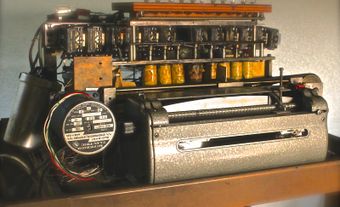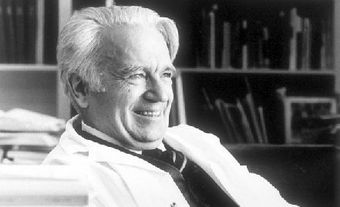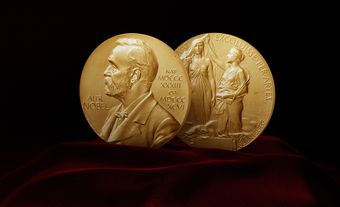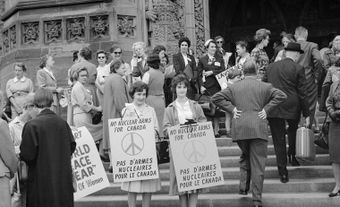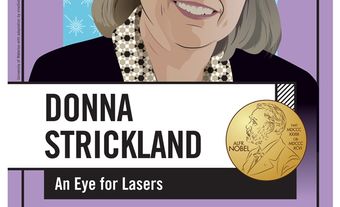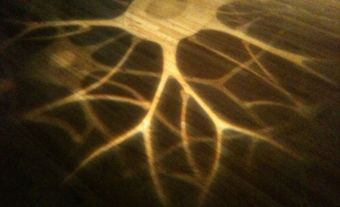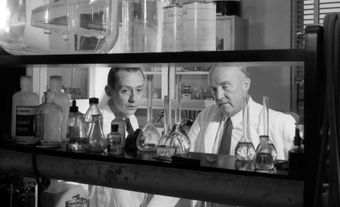John Charles Polanyi, CC, OOnt, PC, FRS, FRSC, chemist, professor (born 23 January 1929 in Berlin, Germany). In 1986, John Polanyi was jointly awarded the Nobel Prize in Chemistry (see Nobel Prizes and Canada; Chemistry). In addition to this achievement, he was the founding chairman (1960-78) of the Canadian Pugwash Group.

Early Life and Education
John Polanyi’s grandfather, Mihaly Pollacsek, was a successful railway builder and his grandmother, Cecile Wohl, was active in the intellectual life of Budapest. One uncle, Karl Paul Polanyi, was one of the century's influential critics of market capitalism. John's father, Michael Polanyi, was an accomplished chemist and philosopher who did pioneering work on the mechanisms of elemental reactions (see Chemistry; Philosophy).
Polanyi and his family moved to England in 1933. During the Second World War, he was sent to safety in Toronto. He entered Manchester University in 1946 and received his PhD in chemistry in 1952 on the basis of his work measuring the strengths of chemical bonds in compounds that have been subjected to very high temperatures.
Career and Nobel Prize
That same year John Polanyi accepted a postdoctoral fellowship at the National Research Council of Canada (NRC) in Ottawa, where he worked with E.W.R. Steacie and spent a few months in the laboratory of future Nobel laureate Gerhard Herzberg. Polanyi had already directed his work to the study of the motions of newly born reaction products and to the telltale imprints of the forces that created them. After working as a research associate at the University of Princeton (1954-56), he returned to Canada in 1956 as a lecturer in chemistry at the University of Toronto, where he was later appointed professor (1962) and university professor (1974).
In 1958 Polanyi and his graduate student Kenneth Cashion published their first findings on infrared chemiluminescence (the emission of light by an atom or molecule that is in an excited state). By introducing newly formed atomic hydrogen into a stream of chlorine gas at low temperatures, they found that instead of losing their energy in collisions, the newly formed hydrogen chloride molecules discharged it in a cascade of infrared photons. Coincidentally, Arthur Schawlow (a graduate of the University of Toronto) and Charles H. Townes developed the principle of the laser. Polanyi was quick to realize that his findings could have important practical implications for the construction of a powerful "chemical" laser. In 1964 J.V.V. Kasper and G.C. Pimentel were able to construct such a laser based on chemical reactions. Since then, these "vibrational" lasers have made enormous contributions to science, medicine and industry.
Polanyi's discoveries have provided a new way of investigating the very nature of chemical reactions themselves. Polanyi's contributions to science were recognized on a global scale in 1986, when he shared the Nobel Prize in Chemistry with Dudley Herschenbach and Yuan T. Lee for developing "a new field of research in chemistry... in which the extremely weak infrared emission from a newly formed molecule is measured." (See also Nobel Prizes and Canada.)

Polanyi’s later work focused on the use of spectroscopy (the science that deals with the analysis of the light spectrum) to gain an insight into what he calls the "molecular dance" in chemical reactions, the process by which chemicals change partners.
Activism
John Polanyi's influence ranges far beyond his contributions to chemical science. He is a vocal critic of short-sighted government science policies which look skeptically on the value of "pure" research. He has been very active in the peace and disarmament movements as founding chair of the Canadian Pugwash Group and as a speaker and prolific author. He has also spoken widely on the nature of science and its relation to creativity and art.
Select Honours and Awards
John Polanyi is the recipient of numerous honours, awards and honorary degrees, including:
- Fellow, Royal Society of Canada (1966)
- Fellow, Royal Society (1971)
- Officer, Order of Canada (1974)
- Companion, Order of Canada (1979)
- Nobel Prize in Chemistry, Royal Swedish Academy of Sciences (1986)
- Member, Order of Ontario (1987)
- Izaak Walton Killam Memorial Prize, Canada Council for the Arts (1988)
- Royal Medal, Royal Society of London (1989)
- Inductee, Canadian Science and Engineering Hall of Fame (1992)
- Member, Queen’s Privy Council for Canada (1992)
- Andrei Sakharov Prize, American Physical Society (2022)

 Share on Facebook
Share on Facebook Share on X
Share on X Share by Email
Share by Email Share on Google Classroom
Share on Google Classroom
